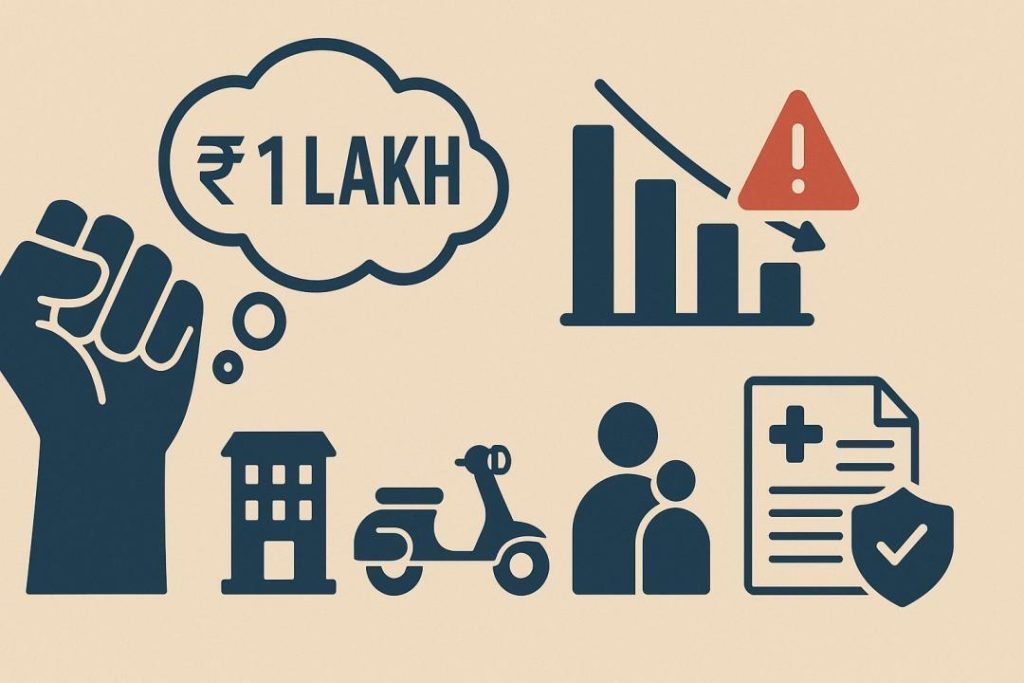
Entrepreneur Shows Why ₹1 Lakh Salary Isn’t Enough in Urban India
The notion of a comfortable middle-class life in urban India has long been a cherished dream. A decent salary, a nice apartment, a reliable car, and a vacation or two – these are the hallmarks of a secure and fulfilling existence. Or so we thought. A recent viral breakdown by entrepreneur Nishkarsh Sharma has sent shockwaves through the Indian middle class, revealing the harsh reality of the cost of living in urban India. In this post, we’ll delve into Sharma’s compelling analysis and explore the implications of his findings on the Indian economy.
Sharma’s breakdown is based on his own experience as an entrepreneur and his observations of his peers. He posits that a salary of ₹1 lakh (approximately $1,400) per month, which was once considered a decent income, is no longer enough to sustain a comfortable lifestyle in urban India. To illustrate his point, Sharma has broken down his monthly expenses into various categories.
Here’s a snapshot of his expenses:
- Rent: ₹25,000 (approximately $350)
- EMIs (Equated Monthly Installments): ₹15,000 (approximately $210)
- Transport: ₹10,000 (approximately $140)
- Groceries: ₹10,000 (approximately $140)
- Family support: ₹10,000 (approximately $140)
- Healthcare: ₹10,000 (approximately $140)
Total expenses: ₹80,000 (approximately $1,120)
As Sharma points out, these expenses quickly add up, leaving little room for savings, entertainment, or unexpected expenses. By the end of the month, the ₹1 lakh salary begins to feel like a distant dream. With costs rising faster than paychecks, it’s no wonder that many Indians are feeling the pinch.
So, what’s driving this cost-of-living crisis in urban India? According to Sharma, it’s a combination of factors. Firstly, rent prices have skyrocketed in recent years, making it difficult for people to find affordable housing. EMIs have also become a significant burden, as loans for housing, cars, and other consumer goods have become more accessible but also more expensive.
Transport costs are another major expense, as the rising cost of fuel, maintenance, and parking fees takes a toll on commuters. Groceries, too, have become more expensive, as inflation and supply chain disruptions drive up prices. Family support, healthcare, and other miscellaneous expenses also contribute to the growing burden of costs.
But what does this mean for the Indian middle class? For many, the dream of a comfortable life is slowly slipping away. With salaries failing to keep pace with rising costs, people are being forced to make difficult choices about how to allocate their resources. Some are turning to entrepreneurship or the gig economy, seeking flexibility and higher earnings. Others are opting for online work or freelancing, which offers greater autonomy and potentially higher pay.
The consequences of this cost-of-living crisis are far-reaching. As the middle class struggles to make ends meet, consumer spending, which is a crucial driver of economic growth, begins to slow. This can have a ripple effect on businesses, leading to reduced investment, layoffs, and even economic contraction.
In conclusion, Nishkarsh Sharma’s viral breakdown has shed light on the harsh realities of the cost of living in urban India. A salary of ₹1 lakh is no longer enough to sustain a comfortable lifestyle, and the middle class is struggling to cope with the rising costs of living. As the Indian economy continues to evolve, it’s essential to address these challenges head-on, whether through policy interventions, business innovation, or individual adaptability.
For those seeking a comfortable life in urban India, the message is clear: it’s time to rethink your assumptions about the middle-class dream and adapt to the new reality.
Source:
https://ascendants.in/my-money/salary-illusion-india-middle-class-cost-of-living/






